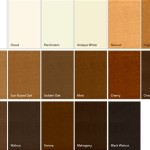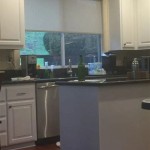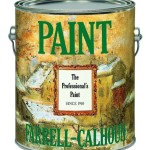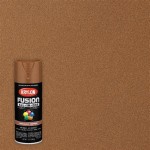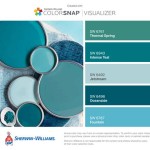Robins Egg Blue Paint Color: A Timeless Classic
Robins egg blue, a soothing and universally appealing hue, has maintained its status as a timeless classic in the world of interior design, fashion, and visual aesthetics. This color, inspired by the distinctive blue-green shade of the American robin's eggs, offers a unique blend of tranquility and understated elegance, making it a versatile choice for a wide range of applications. Its enduring popularity stems from its ability to evoke feelings of calmness, serenity, and a connection to nature, while simultaneously providing a touch of sophistication and refinement.
The appeal of robins egg blue extends beyond mere aesthetics; it resonates with deeper psychological and emotional connections. The color's association with nature, particularly with the imagery of springtime rejuvenation and new beginnings, contributes to its positive and uplifting qualities. This makes it a welcome addition to spaces intended for relaxation, creativity, or social interaction. Its gentle and inviting nature further allows it to blend seamlessly with various design styles, from traditional to contemporary, showcasing its adaptability and enduring value.
Understanding the nuances of robins egg blue requires a detailed examination of its color properties, its historical context, and its applications across different design disciplines. This analysis will provide a comprehensive perspective on why this specific shade has remained a favored choice for designers and individuals seeking to incorporate a touch of timeless elegance into their environments.
Understanding the Color Psychology of Robins Egg Blue
Color psychology plays a significant role in understanding the impact of robins egg blue on human perception and emotion. This particular shade of blue-green evokes feelings of tranquility, peace, and serenity. Blue is generally associated with stability, trust, and security, while green is often linked to nature, growth, and harmony. The combination of these two colors in robins egg blue creates a balanced and calming effect, making it an ideal choice for spaces where relaxation and contemplation are desired.
Unlike more intense shades of blue, robins egg blue is not overpowering or excessively stimulating. Its muted tone provides a sense of calmness without being passive or boring. This makes it suitable for bedrooms, bathrooms, and living rooms, where a sense of relaxation is prioritized. Its ability to promote focus and clarity also makes it a viable option for home offices or creative studios.
The color's association with nature further enhances its psychological benefits. The connection to the natural world has been shown to reduce stress and promote a sense of well-being. By incorporating robins egg blue into interior spaces, individuals can create a more calming and restorative environment, fostering a sense of connection to the outdoors, even within an urban setting. Furthermore, the color's association with springtime and new beginnings adds to its uplifting and optimistic qualities, making it a popular choice for individuals seeking to create a positive and inviting atmosphere.
Historical Context and Cultural Significance
The widespread recognition and appreciation of robins egg blue as a distinct color emerged in the early 20th century, largely due to its association with the luxury jewelry brand, Tiffany & Co. The company's iconic blue boxes, officially known as "Tiffany Blue," used a specific shade of robins egg blue, instantly associating the color with elegance, exclusivity, and high-end design. This association elevated the color's status and established it as a symbol of refined taste.
Prior to its association with Tiffany & Co., the color was less formally defined and often referred to as "aqua" or "turquoise." However, the company's consistent use of the specific shade solidified its identity and contributed to its widespread recognition. The color became synonymous with the brand's image, and its popularity grew as Tiffany & Co.'s influence expanded globally.
Beyond its association with luxury branding, robins egg blue has also been used in various historical and cultural contexts, often linked to periods of artistic and design innovation. Its popularity in the mid-century modern era, for example, reflects the era's emphasis on clean lines, geometric shapes, and muted color palettes. The color's ability to complement both natural and synthetic materials made it a favorite among architects and designers working in this style. Its continued use in contemporary design demonstrates its adaptability and enduring appeal, transcending specific trends and maintaining its relevance across different eras.
Applications in Interior Design and Décor
Robins egg blue offers a wide range of applications in interior design and décor, making it a versatile choice for various spaces and styles. Its calming and inviting nature makes it particularly well-suited for bedrooms and bathrooms, where a sense of relaxation is paramount. In bedrooms, it can be used as the primary wall color to create a soothing and restful atmosphere. It can also be incorporated through bedding, curtains, and other decorative accessories to add a touch of gentle color without overwhelming the space.
In bathrooms, robins egg blue can create a spa-like ambiance, particularly when paired with white or neutral tones. It can be used on walls, tiles, or even bathroom fixtures to evoke a sense of tranquility and cleanliness. Its association with water further enhances its suitability for this space, creating a cohesive and calming environment.
Beyond bedrooms and bathrooms, robins egg blue can also be used effectively in living rooms, dining rooms, and kitchens. In living rooms, it can be used as an accent color to add a touch of sophistication and visual interest. It can be incorporated through throw pillows, rugs, artwork, or even a single statement wall. In dining rooms, it can create a welcoming and inviting atmosphere, particularly when paired with warm wood tones and natural light. In kitchens, it can be used on cabinets, backsplashes, or even kitchen islands to add a pop of color without being overly stimulating. Its versatility allows it to blend seamlessly with various design styles, from traditional to contemporary, making it a timeless choice for any home.
Furthermore, robins egg blue can be successfully combined with a variety of other colors, making it a highly adaptable choice for interior design projects. It pairs well with white, cream, and other neutral tones to create a clean and sophisticated look. It can also be combined with bolder colors, such as coral, yellow, or even black, to create a more dynamic and visually stimulating space. The key is to maintain a sense of balance and harmony, ensuring that the colors complement each other and create a cohesive overall aesthetic. Its ability to work in both monochromatic and multi-colored schemes showcases its flexibility and enduring appeal as a foundational element in interior design.

2051 60 Bird S Egg A Paint Color By Benjamin Moore Regal Centers
Jrl Interiors Decorating With The Color Blue

Duck Egg Blue Paint Colors

Timeless And Classic Interior Design Habitat Plus

Perfectly Pale French Blue Paint Timeless Blues O Lovely

All Colors Amy Howard At Home

Pretty Coastal Blues For Tranquil Airy Looks O Lovely

Behr Premium 1 Qt Bcp25 Egg Blue Interior Chalk Decorative Paint 710004 The Home Depot

Perfectly Pale French Blue Paint Timeless Blues O Lovely

Perfectly Pale French Blue Paint Timeless Blues O Lovely
Related Posts


